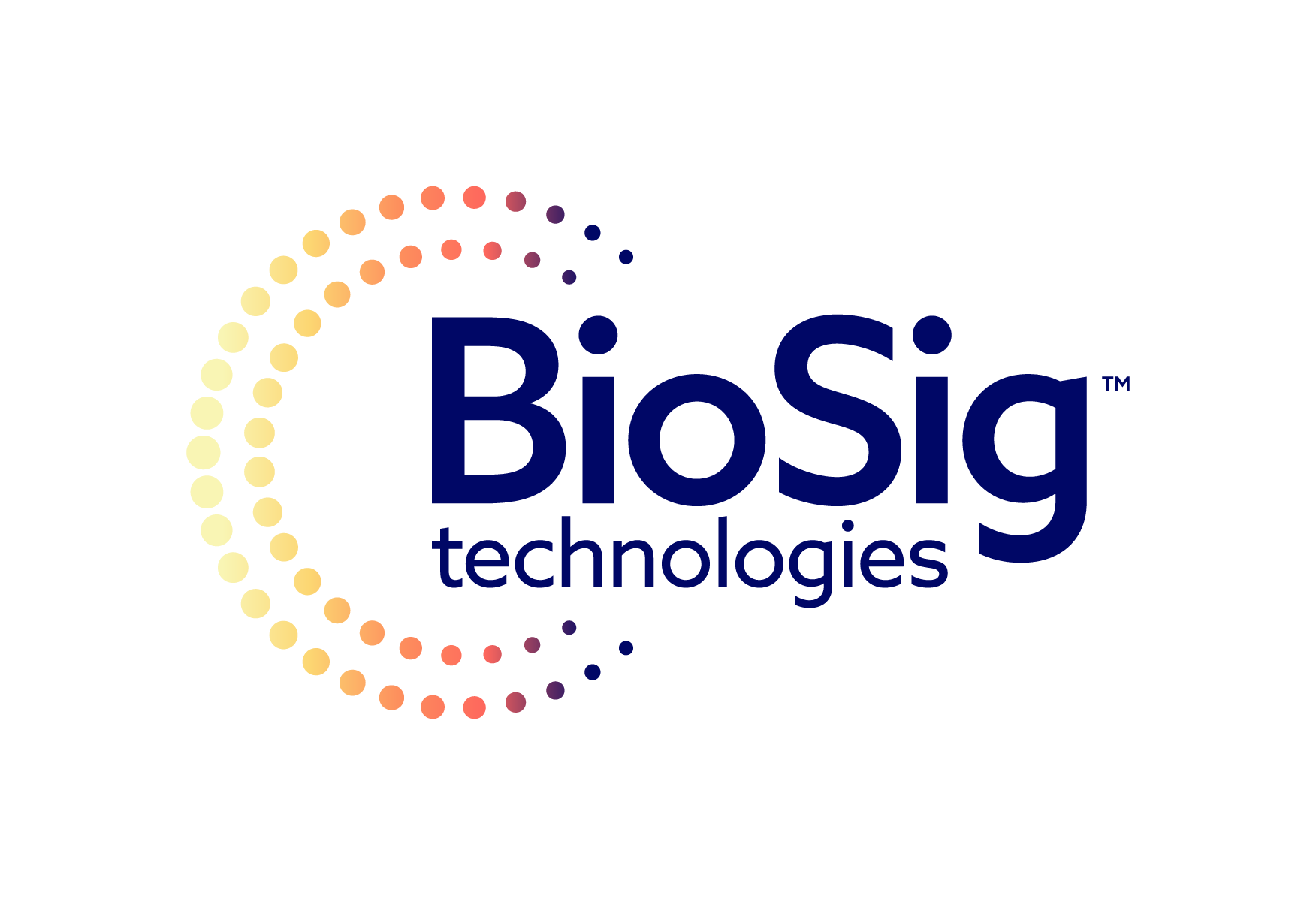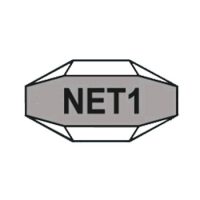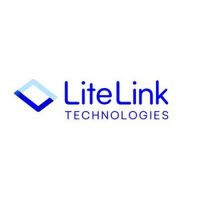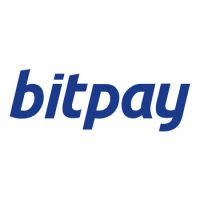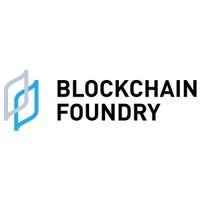Blockchain
RETRANSMISSION: HIVE Blockchain October 2022 Bitcoin Production was 307 BTC mined and 3,311 BTC HODL on its Balance Sheet
This news release constitutes a “designated news release” for the purposes of the Company’s prospectus supplement dated September 2, 2022 to its amended and restated short form base shelf prospectus dated January 4, 2022.
Vancouver, British Columbia–(Newsfile Corp. – November 7, 2022) – HIVE Blockchain Technologies Ltd. (TSXV: HIVE) (NASDAQ: HIVE) (FSE: HBFA) (the “Company” or “HIVE”) is pleased to announce the production figures from the Company’s global Bitcoin operations for the month of October 2022, with 307 Bitcoin produced and a BTC HODL balance of 3,311 Bitcoin as of November 5, 2022.
Summary Overview:
- HIVE has a strong balance sheet, with approximately $70 million USD of Bitcoin, and no expensive borrowing against equipment like ASICs or GPU chips or digital assets.
- HIVE owns all of its ASICs and GPUs, with clear title; there are no debt servicing payments associated with any of our digital assets or crypto mining hardware.
- HIVE has produced 307 Bitcoin in the month of October, from ASIC and GPU mining operations, representing an average of 115 Bitcoin Per Exahash.
- HIVE has received all 140 PH/s of its Micro BT M30S++ miners which are in the process of being installed (currently approximately 80 PH/s have been installed).
- HIVE expects to receive over 1 Exahash of the HIVE Intel Bitcoin ASIC miners projected growth in the next 3-4 months with scheduled deliveries.
October 2022 Production Figures
HIVE is pleased to announce its October 2022 production figures and mining capacity:
- 262 Bitcoin Produced from ASIC mining operations;
- 2.38 Exahash of Bitcoin mining capacity at the end of October, with an average hashrate of 2.28 Exahash of Bitcoin mining capacity during the month of October from ASIC mining operations, with an average of 115 Bitcoin per Exahash;
- An additional 45 Bitcoin were mined by our GPUs in October.
Frank Holmes, Executive Chairman of HIVE stated, “We are very happy to be producing over 300 Bitcoin per month, which is about 1% of the global network, even when network difficulty is at an all-time high. We have sold all our Ethereum holdings. In October we produced an average of 9.9 Bitcoin per day.”
Mr. Holmes further stated, “I am very pleased with HIVE’s growth of Bitcoin ASIC hashrate over the last year, without taking on the risk of expensive equipment financing or Bitcoin backed loans. Most of the mining industry is plagued with loans and debt, where either their Bitcoin balance sheet is encumbered, or the ASIC hardware they have purchased has expensive debt associated with it. The leveraging of assets during the bull market is causing great stress for our peers in the mining industry, as asset values have corrected to bear market conditions. HIVE has maintained a strong position and pursued a steady rate of growth as our Bitcoin mining footprint expands, without expensive high-risk debt and without encumbering or collateralizing any of our Bitcoin assets.”
Aydin Kilic, President & COO of HIVE noted, “We continue to strive for operational excellence, ensuring that as we scale our hashrate we also optimize our uptime, to ensure ideal Bitcoin output figures.”
Mr. Kilic continued, “Our fleet of GPU’s now use a unique algorithm to mine altcoins, which are exchanged for Bitcoin, therefore HIVE earns and takes custody of Bitcoin only. This month our GPU fleet produced 45 BTC. This is in addition to the 262 Bitcoin produced from our Bitcoin ASIC mining operations during October, for a total of 307 Bitcoin produced.”
The Company’s total Bitcoin production in October 2022 was:
- 307 BTC Produced
- 9.9 BTC produced per day on average
- 2.77 Exahash of BTC Hashrate (Bitcoin ASIC hashrate plus Bitcoin GPU hashrate) as of October 31, comprised of 2.38 Exahash of Bitcoin ASIC hashrate and 0.39 Exahash of Bitcoin GPU hashrate, with a monthly average of 2.67 Exahash, which is equal to 115 Bitcoin per Exahash.
HIVE Current Bitcoin Production
As of November 2, HIVE is producing an average of over 9.5 Bitcoin per day from ASIC and GPU production, comprised of over 8 Bitcoin per day from our ASIC fleet and over 1 Bitcoin per day from our GPU fleet.
The Company has received 140 PH/s of MicroBT M30S++ miners. These machines have been partially installed with approximately 66 PH/s of remaining as of press time. It is expected that this will increase HIVE’s ASIC hashrate to approximately 2.44 Exahash during the month of November once installed. In addition to the GPU based mining which provides an equivalent 0.39 Exahash of Bitcoin hashrate, HIVE’s expected total Bitcoin hashrate from ASICs and GPUs will be over 2.7 Exahash by the end of November.
Bitcoin HODL Update
The Company notes its balance sheet of Bitcoin has grown in the last fiscal quarter, where at period end June 30, 2022, HIVE had 3,231 Bitcoin, and as of November 5, 2022 HIVE has 3,311 Bitcoin, with a market value of over $70 million USD.
The Company notes this increase in Bitcoin treasury comes during a time where the Company has completed capital expenditure commitments for ASIC and infrastructure growth. The Company believes that a prudent treasury management strategy with a term long view to protect the balance sheet from market volatility and build value for shareholders, is of key importance in the crypto mining industry.
Network Mining Difficulty
Network difficulty factors are a significant variable in the Company’s gross profit margins. The Bitcoin network difficulty saw a total 17% increase during the month of October. Accordingly, Bitcoin mining difficulty had increased substantively for the month of October relative to the month of September.
About HIVE Blockchain Technologies Ltd.
HIVE Blockchain Technologies Ltd. went public in 2017 as the first cryptocurrency mining company with a green energy and ESG strategy.
HIVE is a growth-oriented technology stock in the emergent blockchain industry. As a company whose shares trade on a major stock exchange, we are building a bridge between the digital currency and blockchain sector and traditional capital markets. HIVE owns state-of-the-art, green energy-powered data centre facilities in Canada, Sweden, and Iceland, where we endeavor to source only green energy to mine digital assets such as Bitcoin on the cloud. Since the beginning of 2021, HIVE has held in secure storage the majority of its treasury of ETH and BTC derived from mining rewards. Our shares provide investors with exposure to the operating margins of digital currency mining, as well as a portfolio of cryptocurrencies, primarily BTC, with the ETH subsequently sold. Because HIVE also owns hard assets such as data centers and advanced multi-use servers, we believe our shares offer investors an attractive way to gain exposure to the cryptocurrency space.
We encourage you to visit HIVE’s YouTube channel here to learn more about HIVE.
For more information and to register to HIVE’s mailing list, please visit www.HIVEblockchain.com. Follow @HIVEblockchain on Twitter and subscribe to HIVE’s YouTube channel.
On Behalf of HIVE Blockchain Technologies Ltd.
“Frank Holmes”
Executive Chairman
For further information please contact:
Frank Holmes
Tel: (604) 664-1078
Neither the TSX Venture Exchange nor its Regulation Services Provider (as that term is defined in policies of the TSX Venture Exchange) accepts responsibility for the adequacy or accuracy of this news release
Forward-Looking Information
Except for the statements of historical fact, this news release contains “forward-looking information” within the meaning of the applicable Canadian securities legislation that is based on expectations, estimates and projections as at the date of this news release. “Forward-looking information” in this news release includes, but is not limited to: business goals and objectives of the Company; the results of operations for October 2022; the HODL strategy adopted by the Company; the acquisition, deployment and optimization of the mining fleet and equipment; the continued viability of its existing Bitcoin mining operations; and other forward-looking information concerning the intentions, plans and future actions of the parties to the transactions described herein and the terms thereon.
Factors that could cause actual results to differ materially from those described in such forward-looking information include, but are not limited to, the volatility of the digital currency market; the Company’s ability to successfully mine digital currency; the Company may not be able to profitably liquidate its current digital currency inventory as required, or at all; a material decline in digital currency prices may have a significant negative impact on the Company’s operations; the volatility of digital currency prices; continued effects of the COVID-19 pandemic may have a material adverse effect on the Company’s performance as supply chains are disrupted and prevent the Company from carrying out its expansion plans or operating its assets; protection of proprietary rights; the effect of government regulation and compliance on the Company and the industry; network security risks; the ability of the Company to maintain properly working systems; reliance on key personnel; an increase in network difficulty may have a significant negative impact on operations; the anticipated growth and sustainability of hydroelectricity for the purposes of cryptocurrency mining in the applicable jurisdictions; the inability to maintain reliable and economical sources of power for the Company to operate cryptocurrency mining assets; the risks of an increase in the Company’s electricity costs, cost of natural gas, changes in currency exchange rates, energy curtailment or regulatory changes in the energy regimes in the jurisdictions in which the Company operates and the adverse impact on the Company’s profitability; future capital needs and uncertainty of additional financing, including the Company’s ability to utilize the Company’s at-the-market offering (the “ATM Program”), the prices at which the Company may sell Common Shares in the ATM Program and other equity issuances resulting in dilution, as well as capital market conditions in general; the impact of energy curtailment or regulatory changes in the energy regimes in the jurisdictions in which the Company operates; and other related risks as more fully set out in the registration statement of Company and other documents disclosed under the Company’s filings at www.sec.gov/EDGAR and www.sedar.com.
The forward-looking information in this news release reflects the current expectations, assumptions and/or beliefs of the Company based on information currently available to the Company. In connection with the forward-looking information contained in this news release, the Company has made assumptions about the Company’s objectives, goals or future plans, the timing thereof and related matters. The Company has also assumed that no significant events occur outside of the Company’s normal course of business. Although the Company believes that the assumptions inherent in the forward-looking information are reasonable, forward-looking information is not a guarantee of future performance and accordingly undue reliance should not be put on such information due to the inherent uncertainty therein. The Company disclaims any intention or obligation to update or revise any forward-looking information, whether as a result of new information, future events or otherwise, other than as required by law.
Blockchain
BioSig Technologies, Inc. Signs Definitive Share Exchange Agreement with Streamex Exchange Corp. to Launch First-Mover Real-World Asset (RWA) Tokenization Company Bringing Commodity Markets On-Chain.
Blockchain
From Onboarding to Settlement in Minutes: TransFi Launches BizPay to Redefine Global Business Payments

TransFi
Blockchain
Blocks & Headlines: Today in Blockchain – May 22, 2025

The blockchain universe never sleeps. From pioneering cross-border payment systems in Central America to city-wide crypto strategies in New York City, today’s headlines reveal an industry maturing at breakneck speed. In this edition of Blocks & Headlines, we explore five landmark developments:
-
Guatemala’s Banco Industrial integrates blockchain for seamless cross-border remittances.
-
NYC Mayor’s Office unveils a comprehensive crypto and blockchain roadmap.
-
OSR Holdings, BCM Europe & Taekwondo Cooperative sign an MOU to launch the OSRH token.
-
Bybit’s “Chicken Trader” livestream—crypto meets poultry in the world’s first poultry-powered trading showdown.
-
FIFA taps Avalanche to build a dedicated blockchain for its NFT platform.
These stories underscore three key trends reshaping the ecosystem:
-
Institutional Adoption & Regulation: From national banks to municipal governments, legacy institutions are embracing decentralized technologies.
-
Tokenization & Community Engagement: Strategic partnerships are launching specialized tokens that bridge niche communities with global markets.
-
Innovative Use Cases: Whether gaming, entertainment, or live-stream events, blockchain’s versatility spawns ever-more creative applications.
Join us as we unpack the implications, weigh the opportunities, and forecast where these trajectories might lead.
1. Guatemala’s Largest Bank Integrates Blockchain for Cross-Border Payments
What Happened
Guatemala’s Banco Industrial, the country’s biggest financial institution, announced the deployment of a private‐permissioned blockchain network to streamline remittances from the U.S. into Guatemala City and beyond. The solution reduces settlement times from days to minutes, cuts fees by up to 60 %, and offers real-time traceability for senders and receivers.
Source: Cointelegraph
Analysis & Commentary
-
Financial Inclusion Boost: Remittances account for over 12 % of Guatemala’s GDP. By minimizing friction and cost, blockchain integration will extend financial services to remote communities reliant on diaspora funds.
-
Risk & Compliance: Permissioned networks allow Banco Industrial to retain AML/KYC controls, mitigating concerns around illicit flows. This hybrid approach demonstrates that enterprise blockchain can balance decentralization with regulatory rigor.
-
Regional Ripple Effects: Neighboring Central American banks are watching closely. Should Guatemala’s pilot succeed, we can expect a domino effect across El Salvador, Honduras, and Costa Rica—each seeking to capitalize on faster, cheaper cross-border rails.
Implications
Legacy banks worldwide should view this as a blueprint: private blockchains can coexist with existing compliance frameworks while delivering transformative user benefits. Early movers will capture remittance market share and cultivate fintech partnerships across the Latin American corridor.
2. NYC Mayor Unveils Ambitious Crypto & Blockchain Agenda
What Happened
New York City Mayor Eric Adams detailed his administration’s multi-pronged strategy to make NYC a global crypto hub. Key initiatives include:
-
A regulatory sandbox for crypto startups to pilot DeFi, NFTs, and token-based fundraising under city supervision.
-
Partnerships with CUNY and Columbia University for blockchain research and talent development.
-
Deployment of a blockchain-based public record system for land titles and business registrations.
Source: GovTech
Analysis & Commentary
-
Regulatory Harmony vs. Overreach: By offering a controlled sandbox rather than blanket deregulation, NYC signals a nuanced stance—encouraging innovation without sacrificing consumer protection.
-
Talent Pipeline: Academic partnerships aim to remedy the talent shortage plaguing blockchain firms. Local graduates trained in distributed ledger technologies (DLT) will feed startups, financial institutions, and government agencies.
-
Public Services on Chain: Land registries and business filings on blockchain promise greater transparency and fraud reduction. If scaled effectively, NYC could set a global standard for government-blockchain integration.
Implications
Other major cities—London, Singapore, Dubai—will feel pressure to match NYC’s playbook. Municipal leaders should prioritize sandbox frameworks and academia-industry liaisons to nurture homegrown crypto ecosystems.
3. OSR Holdings, BCM Europe & Taekwondo Cooperative Launch OSRH Token
What Happened
OSR Holdings, BCM Europe, and the Taekwondo Cooperative signed a strategic Memorandum of Understanding to co-develop the OSRH token, a blockchain-based digital asset aimed at supporting global Taekwondo practitioners. Features include:
-
Membership Rewards: Tokens earned through event participation, coaching certifications, and tournament wins.
-
Decentralized Governance: Athletes vote on sponsorship allocations and rule-change proposals via on-chain ballots.
-
Marketplace Integration: A dedicated NFT marketplace for Taekwondo memorabilia, from digital belts to highlight reels.
Source: PR Newswire
Analysis & Commentary
-
Niche Tokenization: OSRH token exemplifies the power of community-focused tokens. By aligning incentives with passion points—training, competition, governance—stakeholders gain ownership and engagement.
-
Governance Innovation: Athlete-driven decision-making on sponsorship and funding disrupts top-down federation models. This could democratize sports governance across disciplines.
-
Commercial Ecosystem: The NFT marketplace offers monetization channels for athletes and federations alike. Strategic royalties on secondary sales ensure sustainable funding.
Implications
Other sports federations and niche communities should explore token models that blend rewards, governance, and commerce. Successful launches will hinge on clear utility, user education, and regulatory compliance in key jurisdictions.
4. Bybit Presents “Chicken Trader”: The World’s First Poultry-Powered Trading Showdown
What Happened
Cryptocurrency exchange Bybit debuted “Chicken Trader,” a live-streamed event where two contestants trade crypto pairs—and manage live chickens—to earn “Egg Points.” Viewers can stake on their favorite trader, earning NFTs and token rewards based on performance.
Source: PR Newswire
Analysis & Commentary
-
Gamification Meets DeFi: Chicken Trader’s fusion of live-stream engagement, staking mechanics, and NFTs exemplifies Web3’s playful ethos—turning trading into interactive entertainment.
-
User Acquisition Strategy: Bybit gamified acquisition funnels, leveraging viral social content to onboard nontraditional crypto audiences intrigued by the novelty factor.
-
Regulatory Tightrope: Combining staking with competition and livestock raises jurisdictional questions around gambling, securities, and animal welfare. Bybit must navigate diverse regulations to scale globally.
Implications
Other exchanges will replicate gamified formats to differentiate UX and grow communities. Yet long-term viability demands balancing flashy live-events with rigorous compliance, sustainable tokenomics, and authentic value for participants.
5. FIFA Taps Avalanche to Power Its NFT Platform
What Happened
Global soccer body FIFA selected the Avalanche blockchain to launch its official NFT marketplace, featuring digital collectibles—from World Cup highlights to player-card packs. Avalanche’s high throughput and low fees were cited as decisive factors.
Source: TradingView (via Cointelegraph)
Analysis & Commentary
-
Scalability & Sustainability: Avalanche’s consensus mechanism delivers sub-second finality and carbon-offset commitments, aligning with FIFA’s environmental pledges.
-
Fan Engagement: Tokenized highlights and limited-edition digital memorabilia expand revenue streams beyond broadcast rights, offering fans verifiable ownership and collectible provenance.
-
Interoperability: Avalanche’s growing DeFi ecosystem enables future integrations—staking fan tokens, launching prediction-market games, or embedding NFT rewards in FIFA’s mobile apps.
Implications
Major sports leagues and entertainment brands eyeing NFT forays will scrutinize Avalanche’s performance under FIFA’s global load. Blockchain platforms must prove they can handle spikes during marquee events—kickoff times, finals, transfer windows—while preserving UX and sustainability goals.
Conclusion
Today’s Blocks & Headlines illustrate blockchain’s multifaceted evolution:
-
Legacy institutions like banks and city governments are unlocking new efficiencies and transparency through private and public DLT networks.
-
Community-driven tokens are redefining governance and monetization in sports and niche domains.
-
Innovative engagement—from poultry-fueled trading spectacles to global soccer NFTs—demonstrates blockchain’s capacity for gamification, fan loyalty, and novel revenue models.
Yet with opportunity comes responsibility: scalable architectures must coexist with robust compliance; token economies require thoughtful design to sustain value; and regulators, academia, and industry must collaborate to craft frameworks that balance innovation with consumer protection.
As blockchain weaves deeper into finance, governance, entertainment, and sports, stakeholders who embrace strategic partnerships, prioritize user education, and invest in resilient infrastructures will lead the charge into Web3’s next frontier.
The post Blocks & Headlines: Today in Blockchain – May 22, 2025 appeared first on News, Events, Advertising Options.
-

 Blockchain Press Releases7 days ago
Blockchain Press Releases7 days agoCoinW Unveils Industry-First Futures Protection Program:Instant Refunds Designed to Safeguard Traders
-

 Blockchain Press Releases4 days ago
Blockchain Press Releases4 days agoCM Global Services (CMGS) Secures Exclusive Multi-Year Logistics & Procurement Partnerships with Compass Mining and NovoMod
-

 Blockchain Press Releases4 days ago
Blockchain Press Releases4 days agoOnRe, Backed by Ethena, Solana Ventures, and RockawayX Launches Structured Yield Product Combining Real-World Stability and On-Chain Upside
-

 Blockchain6 days ago
Blockchain6 days agoBlocks & Headlines: Today in Blockchain – May 19, 2025 | DoubleZero, Toobit, Story Protocol, Marco Polo, Argo Blockchain
-

 Blockchain5 days ago
Blockchain5 days agoVanEck Prepares to Launch PurposeBuilt Fund to Invest in Real-World Applications on Avalanche
-

 Blockchain Press Releases3 days ago
Blockchain Press Releases3 days agoCompass Mining Partners with Synota’s “Impact Mining” Initiative to Transform Bitcoin Hashrate into Community Impact
-

 Blockchain Press Releases3 days ago
Blockchain Press Releases3 days agoWSPN Launches New Website, Unveiling Enhanced Vision for Next-Generation Stablecoin Infrastructure
-

 Blockchain Press Releases6 days ago
Blockchain Press Releases6 days agoHTX Unveils Finalists for $6M Mars Program Special Edition, Space Journey Selection Enters Final Phase













